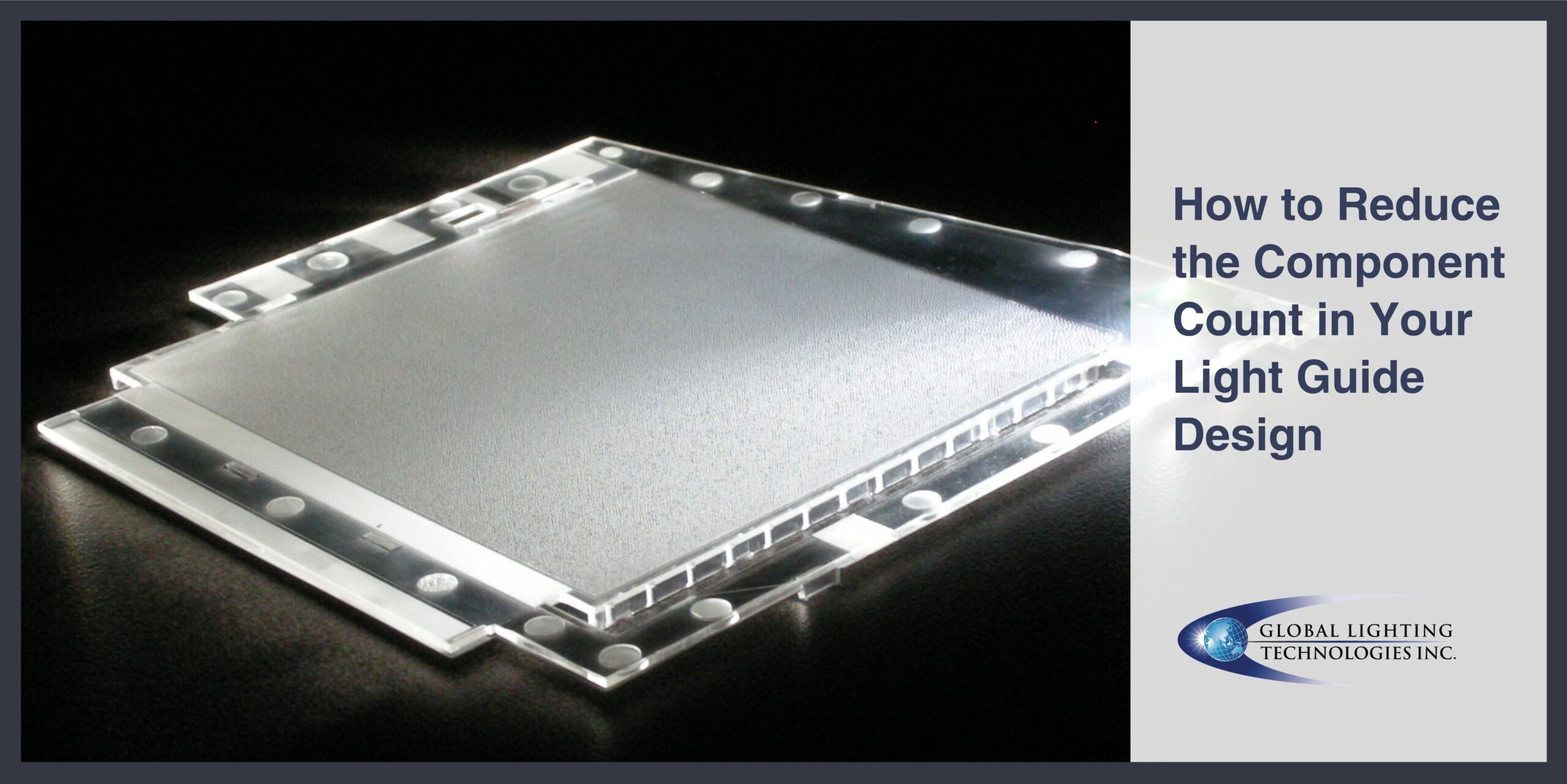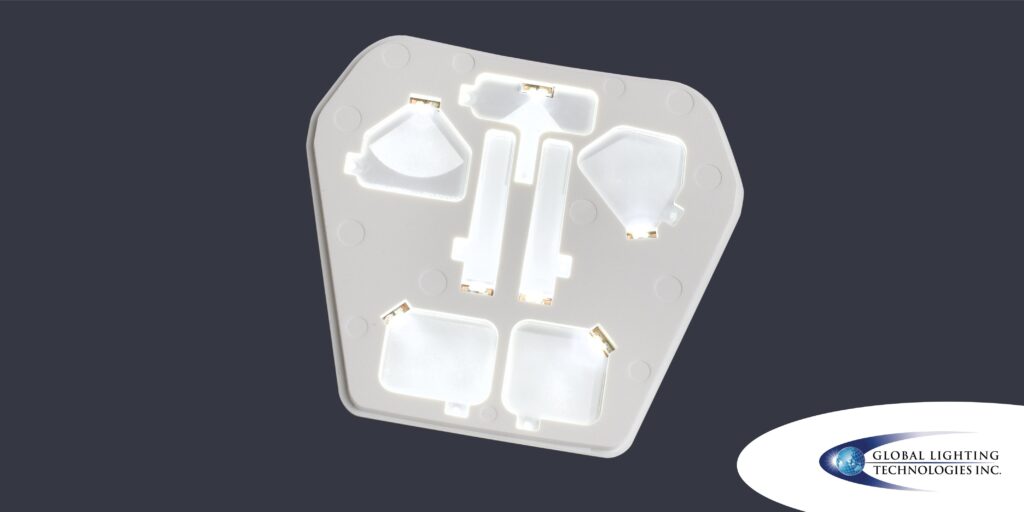Illuminating Efficiency: Our Approach to Streamlining Light Guide Design
Light guide design and manufacturing is intricate because it delivers powerful, efficient illumination in what’s typically a small assembly. Because of this, the quest for efficiency is crucial. While you probably already understand the benefits of reducing component count in light guides, the ways we achieve this isn’t often brought to light.
To reduce component count we:
- Use thinner or more efficient materials
- Eliminate unnecessary components
- Utilize engineered optical features and patterns to reduce the need for secondary components
Read on for key insights from our engineers about how we reduce component count in light guides.
Benefits of Reducing Component Count in Light Guide Designs
The advantages of fewer or consolidated components speak for themselves:
- Cost Savings: The use of fewer components has a direct impact on a customer’s bottom line.
- Improved Longevity: Crafting the most efficient final assembly enhances product lifespan.
- Reduced Failures: Fewer components mean fewer points of potential failure.
- Weight Reduction: A lighter assembly translates to more versatile applications.
- Greater Efficiency: Streamlining a final assembly’s design increases efficiency.
Next, we cover why component reduction starts at the start of customer engagements.
Early Assessment is Key
Our process for component count reduction begins at the earliest stages of a project. During the customer vetting and pre-discovery phase, we assess customer and industry requirements for opportunities to streamline. Because we look to reduce component count from the start, we often eliminate the need to reduce later in the design and prototype stages which saves time and resources.
As projects move into the design stage of our proven process, we leverage our proprietary simulation to optimize designs and identify further opportunities to reduce or consolidate components.
Our design and manufacturing capabilities also allow us to follow strict customer requirements if the safety and effectiveness of the final assembly aren’t compromised. If restrictions pose challenges, our engineers collaborate with the customer to create a tailored solution that achieves their goals.
For example, one customer’s first choice for certain materials in their light guide design was too thick to achieve desired brightness. We alerted the customer and recommended alternatives that were more efficient, reducing the amount of material used.
Common Areas for Reduction & Consolidation
Based on our engineers’ experience and efficiencies gained from past projects, we often target these areas for light guide design component reduction or consolidation:
- LEDs: Opting for high-efficiency LEDs with enhanced brightness allows us to use fewer light sources and less power.
- Films: Advancements in films make it possible to help final assemblies give off more light. Because new films are thinner but better, we can use one or two films to achieve the same level of brightness that used to require two or three films.
- Dual Shot Injection: This technological advancement integrates multiple functions into one housing which reduces the need for additional components. Outdated forms of manufacturing required several masking layers to block or manipulate light; our dual shot injection process encapsulates features into one component that achieves the same result.
Fewer, more efficient components and streamlined manufacturing processes translate into cost savings for our customers. Read on for real examples of how our engineers helped customers reduce component count in their light guide design.
Customer Success Stories
In the case of one beauty mirror, we eliminated the need for a back reflector by designing a white housing with reflective properties. Not only did this eliminate certain components, but it also exceeded customer expectations for brightness and overall product aesthetic.
We achieved similar customer satisfaction for a thermostat housing that had both an LCD screen and illuminated side buttons. Our engineers illuminated both with a single light guide and printed circuit board assembly. We reduced costs by half because our design used fewer LEDs, a single light guide and a far smaller circuit board. The single circuit board also cut down the amount of power the part needed, further reducing costs.
The light guide assembly used to illuminate both the LCD and the buttons for the thermostat application.
Customers benefit from our expertise on optical and mechanical design. Because our engineers work on both together – not only on our light guide technology – we can offer customers a stronger light guide design process and more efficient final assembly.
Addressing Customer Concerns
When we recommend component count reduction or consolidation, the primary concern customers express is about brightness, particularly regarding LEDs. Our response is rooted in data, assuring customers that proposed changes won’t compromise specified thresholds. Open communication and transparency about the light guide design process build trust with our customers.
Customers are not only receptive but actively seek feedback regarding component count. This collaborative approach ensures that the final assembly meets both their specifications and efficiency goals.
Less is More for Light Guide Design Components
Light guide design is rooted in the pursuit of efficiency. When we look for opportunities to reduce and consolidate components at every stage, our customers save money while achieving their illumination goals. Likewise, their end consumers receive a product that often uses less power and has greater longevity. Connect with the Global Lighting Technologies team to start your next project.

